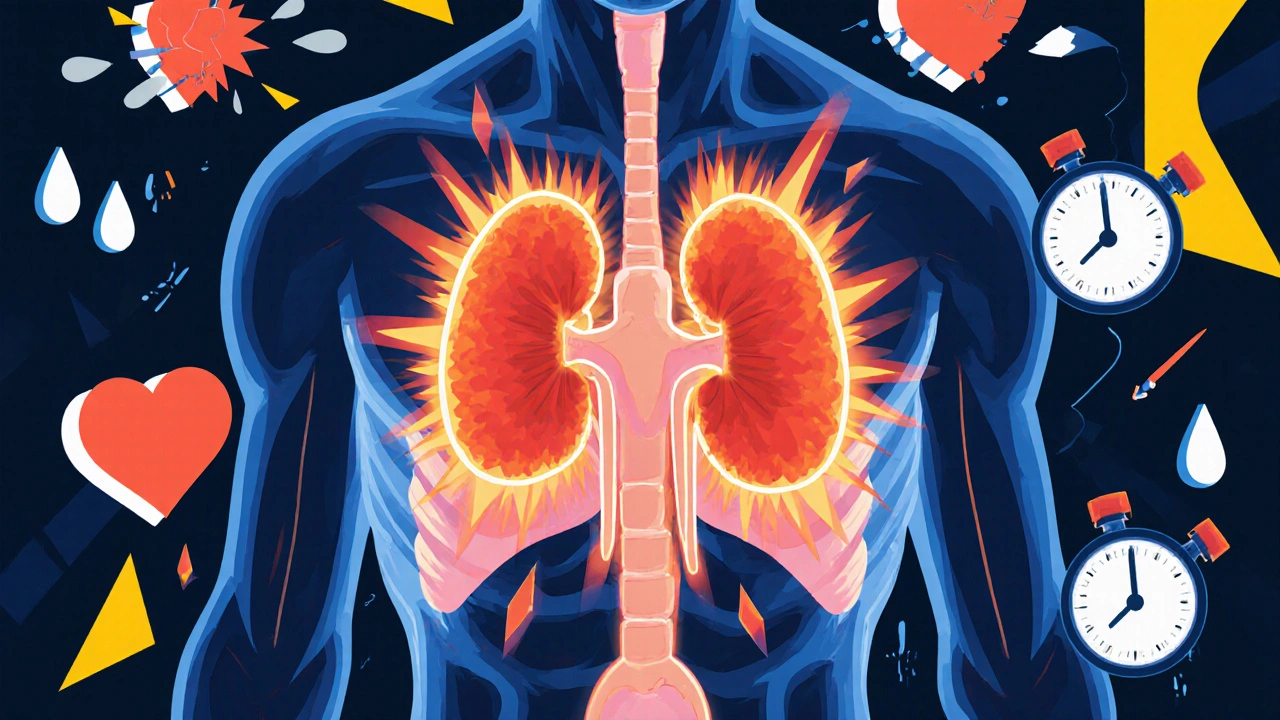Pheochromocytoma Surgery: What You Need to Know About Treatment and Recovery
When a rare tumor called pheochromocytoma, a noncancerous growth on the adrenal gland that overproduces adrenaline and noradrenaline. Also known as adrenal paraganglioma, it causes sudden, dangerous spikes in blood pressure, headaches, sweating, and heart palpitations. This isn’t just high blood pressure—it’s your body’s fight-or-flight system stuck on overdrive. Left untreated, it can trigger heart attacks, strokes, or even sudden death. The only cure? pheochromocytoma surgery, the removal of the tumor through minimally invasive or open abdominal surgery. It’s not a routine procedure. It requires precise planning, specialized teams, and careful control of blood pressure before, during, and after the cut.
Before surgery, patients are often on alpha-blockers like phenoxybenzamine for weeks to stabilize blood pressure and prevent dangerous surges. Beta-blockers may follow, but only after alpha-blockers are in place—using them too early can make things worse. This isn’t something you can rush. The goal is to bring your body into a stable state so the surgery doesn’t turn into a cardiac emergency. Surgeons use imaging—CT scans, MRIs, sometimes MIBG scans—to locate the tumor, which is usually on one adrenal gland but can appear in both or even outside the adrenal system. The surgery itself is often done laparoscopically, meaning small incisions and faster recovery. But if the tumor is large or stuck to nearby organs, open surgery might be needed. Recovery takes days to weeks, depending on the approach. Most people go home in 1–3 days. Blood pressure usually normalizes quickly after the tumor is out, but some need time to adjust their meds.
Not everyone with pheochromocytoma needs surgery right away. Some tumors are tiny and slow-growing, especially in older adults. But if the tumor is causing symptoms or growing, surgery is the only way to stop the risk. Genetic testing is common too—up to 40% of cases are linked to inherited syndromes like MEN2 or VHL. That means your family might need screening. After surgery, you’ll need follow-up blood or urine tests for years to make sure the tumor didn’t come back. And yes, it can. That’s why monitoring matters.
You’ll find real stories and practical advice below—from how to prepare your home for recovery, to what to ask your surgeon before the operation, to how to handle blood pressure swings after surgery. Some posts cover the meds used to stabilize you before the cut. Others explain why certain drugs are dangerous if taken the wrong way. There’s also info on what to expect in the hospital, how long you’ll be off work, and what symptoms should send you back to the ER. This isn’t just theory. These are experiences from people who’ve been through it, and the medical facts that back them up.

